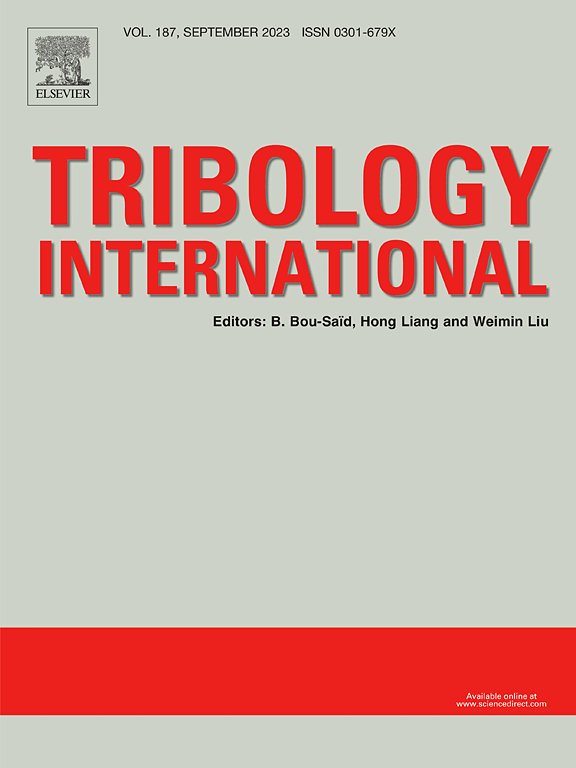Tribological behavior of MP159 superalloys before and after plasma nitriding at different temperatures
IF 6.1
1区 工程技术
Q1 ENGINEERING, MECHANICAL
引用次数: 0
Abstract
MP159 superalloy is considered an ideal candidate for fasteners such as load-bearing bolts in aerospace equipment due to its excellent combination of strength, plasticity and corrosion resistance. As bolted joints, friction and wear due to relative movement between workpieces are unavoidable. The resulting loss of surface material can lead to loosening of bolt fasteners with disastrous consequences. Therefore, it is essential to improve the tribological properties of MP159 superalloy. However, there is a lack of studies on MP159 superalloy regarding tribological behavior and improvement of tribological properties. Therefore, in this work, plasma nitriding was performed on MP159 superalloys to improve the tribological properties, which in turn explored their tribological behavior at room temperature (20 ℃) and elevated temperature (600 ℃). The results were showed that plasma nitriding improved the resistance of MP159 superalloys to deformation, fatigue wear, delamination wear and adhesive wear due to the synergistic enhancement of hardness, H/E and H3/E2. Meanwhile, the glaze layer formed at elevated temperature counteracted most of the hazards to tribological properties caused by the softening of the alloy and severe adhesive wear due to elevated temperature.
不同温度下等离子体氮化前后MP159高温合金的摩擦学行为
MP159高温合金被认为是航空航天设备中承重螺栓等紧固件的理想候选者,因为它具有出色的强度、塑性和耐腐蚀性。作为螺栓连接,由于工件之间的相对运动而产生的摩擦和磨损是不可避免的。由此造成的表面材料损失可能导致螺栓紧固件松动,造成灾难性后果。因此,提高MP159高温合金的摩擦学性能至关重要。然而,关于MP159高温合金的摩擦学行为和改善摩擦学性能的研究还很缺乏。因此,本研究通过对MP159高温合金进行等离子体氮化处理来改善其摩擦学性能,进而研究其在室温(20℃)和高温(600℃)下的摩擦学性能。结果表明:等离子体渗氮通过提高硬度、H/E和H3/E2的协同作用,提高了MP159高温合金的变形、疲劳磨损、脱层磨损和粘着磨损性能;同时,高温下形成的釉层抵消了高温造成的合金软化和严重的粘着磨损对摩擦性能的影响。
本文章由计算机程序翻译,如有差异,请以英文原文为准。
求助全文
约1分钟内获得全文
求助全文
来源期刊

Tribology International
工程技术-工程:机械
CiteScore
10.10
自引率
16.10%
发文量
627
审稿时长
35 days
期刊介绍:
Tribology is the science of rubbing surfaces and contributes to every facet of our everyday life, from live cell friction to engine lubrication and seismology. As such tribology is truly multidisciplinary and this extraordinary breadth of scientific interest is reflected in the scope of Tribology International.
Tribology International seeks to publish original research papers of the highest scientific quality to provide an archival resource for scientists from all backgrounds. Written contributions are invited reporting experimental and modelling studies both in established areas of tribology and emerging fields. Scientific topics include the physics or chemistry of tribo-surfaces, bio-tribology, surface engineering and materials, contact mechanics, nano-tribology, lubricants and hydrodynamic lubrication.
 求助内容:
求助内容: 应助结果提醒方式:
应助结果提醒方式:


